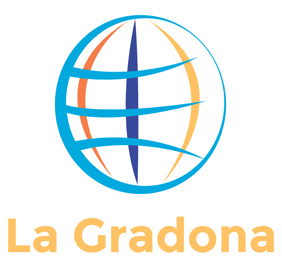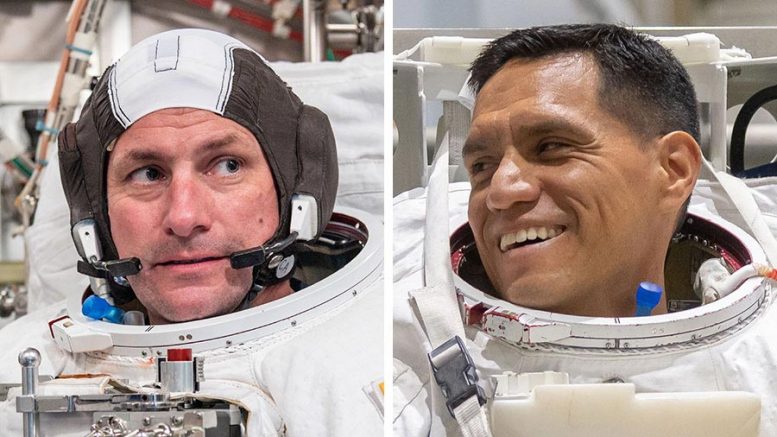Los astronautas de la NASA (de izquierda a derecha) Josh Cassada y Frank Rubio aparecen durante un entrenamiento de caminata espacial en el Centro Espacial Johnson de la NASA. Crédito: NASA
Los ingenieros de vuelo de la Expedición 68 Josh Cassada y Frank Rubio de[{» attribute=»»>NASA began a spacewalk at 9:14 a.m. EST (6:14 a.m. PST) to assemble a mounting bracket on the starboard side of the station’s truss assembly in preparation for the installation of a pair of International Space Station Rollout Solar Arrays on the space station. The spacewalk officially began as the duo switched to the battery power in their suits prior to leaving the airlock.
Cassada, designated extravehicular crew member 1 (EV1), is wearing a suit with red stripes. Rubio, designated extravehicular crewmember 2 (EV 2), is in an unmarked suit. The spacewalk will last approximately seven hours. Coverage of the spacewalk continues on NASA Television, the NASA app, and the agency’s website.

Astronauts Koichi Wakata and Nicole Mann close the hatch to the Quest airlock where astronauts Josh Cassada and Frank Rubio are positioned to begin a spacewalk. Credit: NASA TV
Earlier, crew members on the International Space Station prepared for NASA astronauts Josh Cassada and Frank Rubio to exit the space station’s Quest airlock for a spacewalk outside of the microgravity laboratory.

The first rollout solar arrays were installed during a spacewalk on June 16, 2021, by astronauts (from left) Shane Kimbrough and Thomas Pesquet. Credit: NASA
In March, NASA astronauts Kayla Barron and Raja Chari completed a spacewalk to prepare the space station for the solar array upgrades by assembling and installing modification kits. In June, NASA astronaut Shane Kimbrough and ESA astronaut Thomas Pesquet installed a new ISS Roll-Out Solar Array during a spacewalk. A second Roll-Out Solar Array was installed later that month during a spacewalk by that same two astronauts.
También te puede interesar
-
Encuesta de tránsito de exoplanetas (PETS) de PEPSI. V: Los nuevos espectros de transmisión de Na D indican una atmósfera más tranquila en HD 189733b
-
Las imágenes de alta velocidad y la IA nos ayudan a comprender cómo funcionan las alas de los insectos
-
Tarta de chocolate y sueños marcianos: el helicóptero Ingenuity se despide agridulce | Noticias científicas
-
Brillantes auroras iluminan a los fotógrafos del sur
-
Nuevo descubrimiento: algas y bacterias se fusionan para formar un solo organismo en un laboratorio | Noticias científicas

